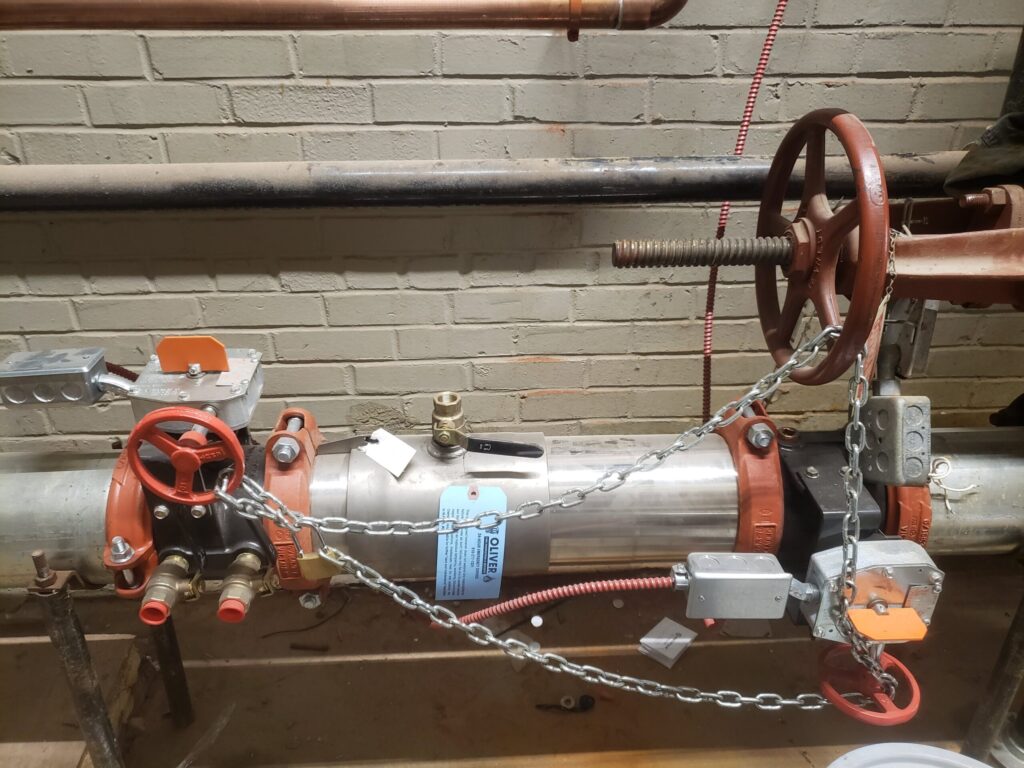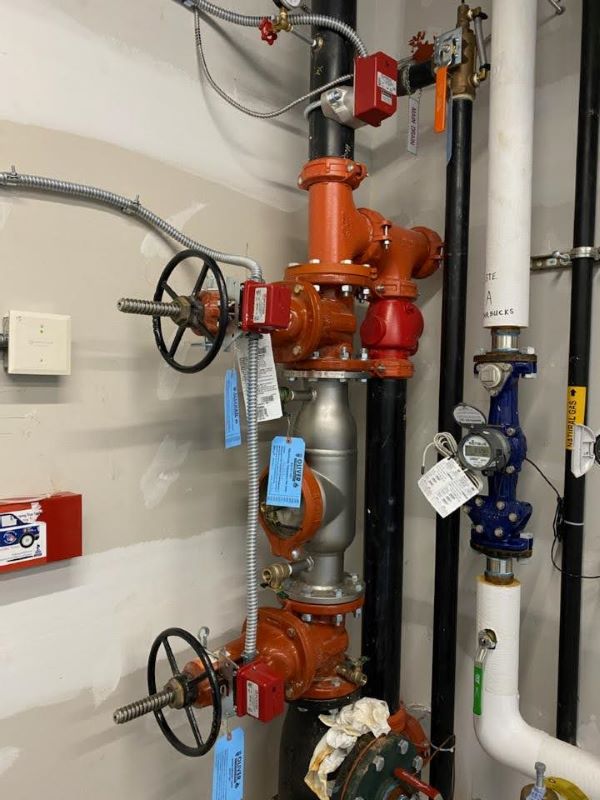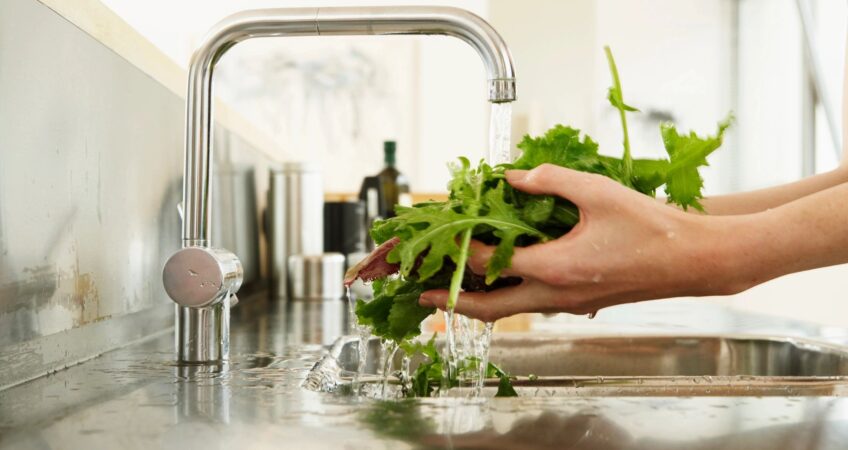When water is transported through public water systems, it is utilized in more ways than just potable (drinkable) water. It is used as water for your plumbing systems, your irrigation systems, and even your fire sprinkler systems. In order to preserve clean and potable water in these systems and to keep contaminants from heading back into the main water supply, a backflow preventer must be installed on these systems and maintained at all times.

Backflow preventers are designed to be installed on the water supply side of the fire protection system. You will most often times see backflow preventers in the horizontal position (parallel to the ground). However, some assemblies do have an approved vertical listing and, where jurisdiction allows, they can be installed either on the vertical up or even on the vertical down. Regardless of the direction of install, backflow assemblies will consist of one or two check valves within the body of the assembly. The check valves will allow water to pass through in one direction but prevent the water from flowing in the reverse direction back to the source (this is called backflow). Preventing backflow helps to ensure that any contaminants or pollutants do not travel back into the main water source and will leave the water clean and potable for other uses.
Backflow assemblies may be located inside of the building or within an underground vault (pit) located between the building and the underground connection at the street. At times, they may also rise up above ground into a contained housing unit called a hotbox. The hotbox allows for more accessibility and would be supplied with a heater used to keep the above ground water at an appropriate temperature (typically above 40°F) to prevent from freezing.
There are two main types of backflow preventers used in fire protection:
- DCV – Double Check Valve Assembly
- RPZ – Reduced Pressure Zone Assembly

Backflow Inspection, Testing and Maintenance
Backflow testing is typically required on an annual basis. Your insurance provider, fire marshal or local water company may determine alternate testing intervals per their individual code requirements. Check with your local jurisdictions and providers to determine what the correct inspection schedule should be for your backflow preventer.
It is also important to note that while the inspector is conducting the inspection on the backflow valves, the water supplied to these systems will need to be shutoff for a short duration (approximately 10-15 minutes). If the connection is in combination with a domestic water system, there may be a disruption in the tenant water supply for a short period of time. We recommend notifying these tenants ahead of any testing to be performed.
Backflow Assemblies are equipped with several test ports. The fire sprinkler inspector will use these ports by hooking up a pressure gauge to accurately determine if water is properly flowing past the check valves to supply the fire sprinkler system. They will also test to ensure the check valves are preventing water from backflowing to the main water supply. This is a pass or fail test. If water is shown to have a blockage (not allowing water to properly flow into the system) or if water is passing (leaking back into the supply) pollutants may be able to contaminate the potable water supply and the system will fail. Corrective actions must then be taken in a timely manner to prevent further contamination. Upon completion of the inspection, you will be issued a report to identify your system components, the test data and an indication of whether the system has passed or failed.
Why did my backflow preventer fail?

A fire sprinkler backflow preventer will have a long life if it is properly cared for, tested and maintained on a regular basis. When backflow preventers are exposed to the elements, located in high traffic areas, or misused (such as storing materials on top of them), this may result in enhanced wear and tear of the assembly. Backflow preventers that are installed in vaults, or pits, may have water accumulation that can submerge the assemblies. When water accumulates in these areas and comes in contact with the metal testing ports, valves and connections, it can leave them susceptible to corrosion. Keeping water out of backflow pits is essential for longevity. Other common reasons for a failed backflow may include torn or worn o-rings and/or gaskets that can wear over time. At other instances, debris may become lodged in the backflow, restricting the valves from opening or closing completely. We would recommend flushing the system to see if the debris can be removed.
Oliver Fire Protection & Security is here to keep your fire protection systems code compliant and working properly for when you need them most. It is extremely important to inspect, test and maintain these systems on their required basis in order to keep our water systems clean and safe. We service and repair countless types of backflow preventer manufacturers including Febco, Apollo, Conbraco, Ames, Watts, and many others. Call our office to receive a free inspection or service quote on your fire backflow preventers.
Helpful Links to Learn more about Cross-Connection & Backflow Compliances in these areas below:

